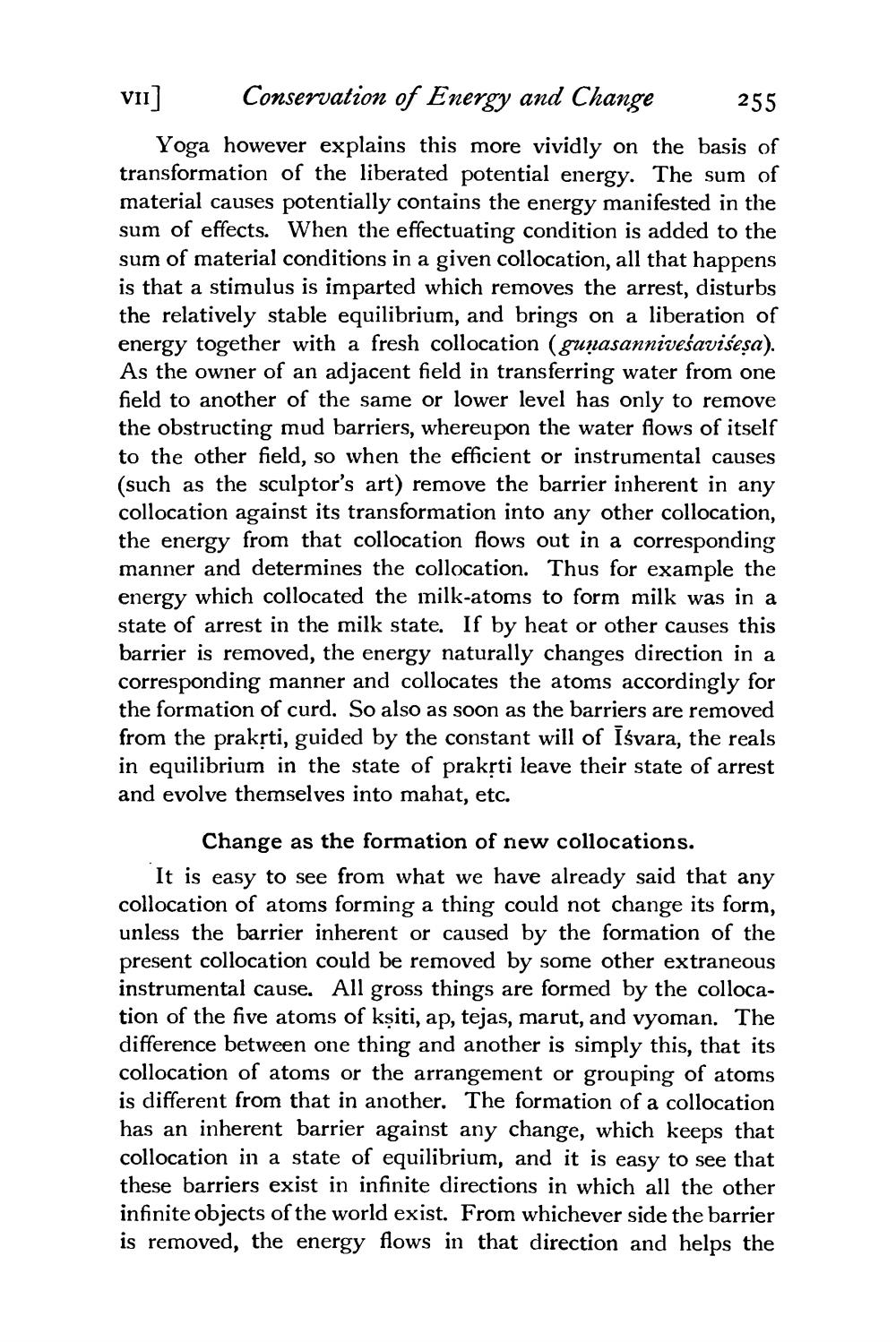________________
V11]
Conservation of Energy and Change
255
Yoga however explains this more vividly on the basis of transformation of the liberated potential energy. The sum of material causes potentially contains the energy manifested in the sum of effects. When the effectuating condition is added to the sum of material conditions in a given collocation, all that happens is that a stimulus is imparted which removes the arrest, disturbs the relatively stable equilibrium, and brings on a liberation of energy together with a fresh collocation (gunasanniveśavisesa). As the owner of an adjacent field in transferring water from one field to another of the same or lower level has only to remove the obstructing mud barriers, whereupon the water flows of itself to the other field, so when the efficient or instrumental causes (such as the sculptor's art) remove the barrier inherent in any collocation against its transformation into any other collocation, the energy from that collocation flows out in a corresponding manner and determines the collocation. Thus for example the energy which collocated the milk-atoms to form milk was in a state of arrest in the milk state. If by heat or other causes this barrier is removed, the energy naturally changes direction in a corresponding manner and collocates the atoms accordingly for the formation of curd. So also as soon as the barriers are removed from the prakrti, guided by the constant will of Isvara, the reals in equilibrium in the state of prakrti leave their state of arrest and evolve themselves into mahat, etc.
Change as the formation of new collocations. It is easy to see from what we have already said that any collocation of atoms forming a thing could not change its form, unless the barrier inherent or caused by the formation of the present collocation could be removed by some other extraneous instrumental cause. All gross things are formed by the collocation of the five atoms of kşiti, ap, tejas, marut, and vyoman. The difference between one thing and another is simply this, that its collocation of atoms or the arrangement or grouping of atoms is different from that in another. The formation of a collocation has an inherent barrier against any change, which keeps that collocation in a state of equilibrium, and it is easy to see that these barriers exist in infinite directions in which all the other infinite objects of the world exist. From whichever side the barrier is removed, the energy flows in that direction and helps the




